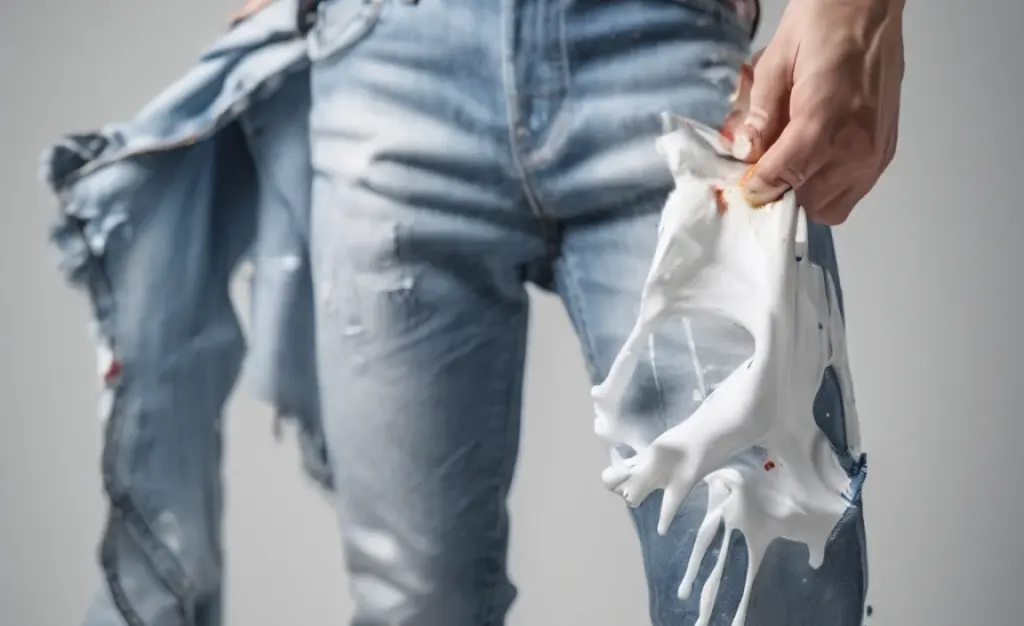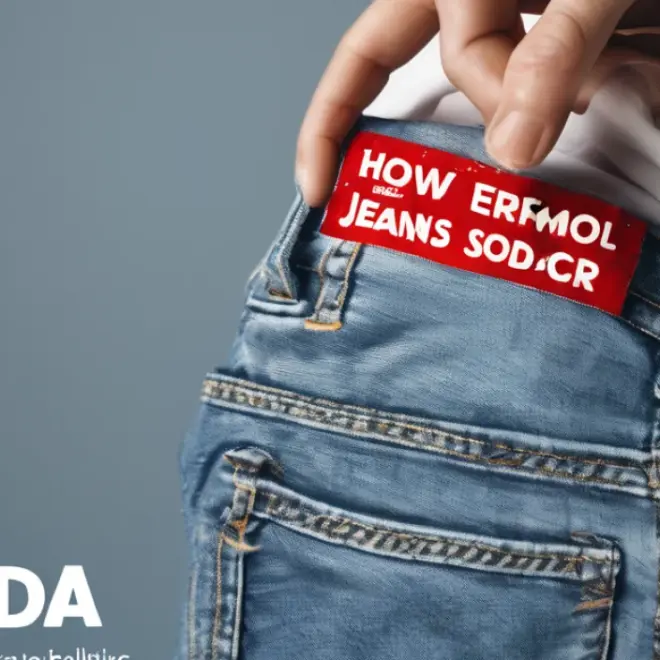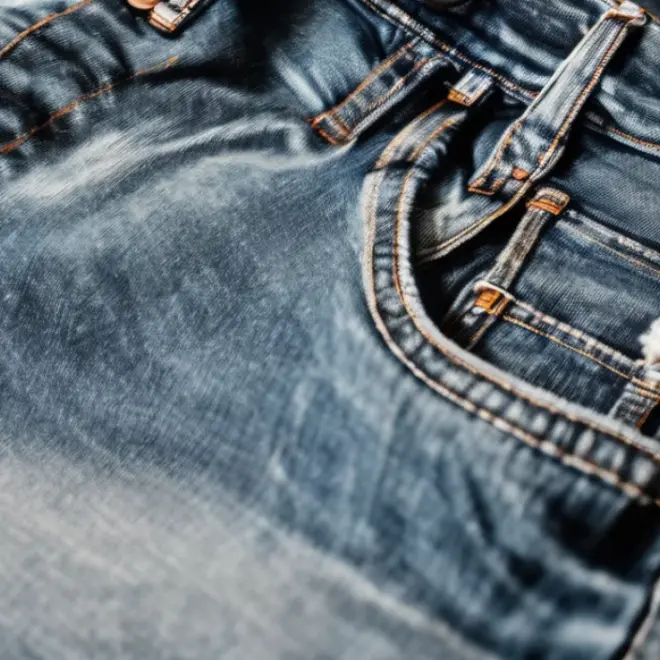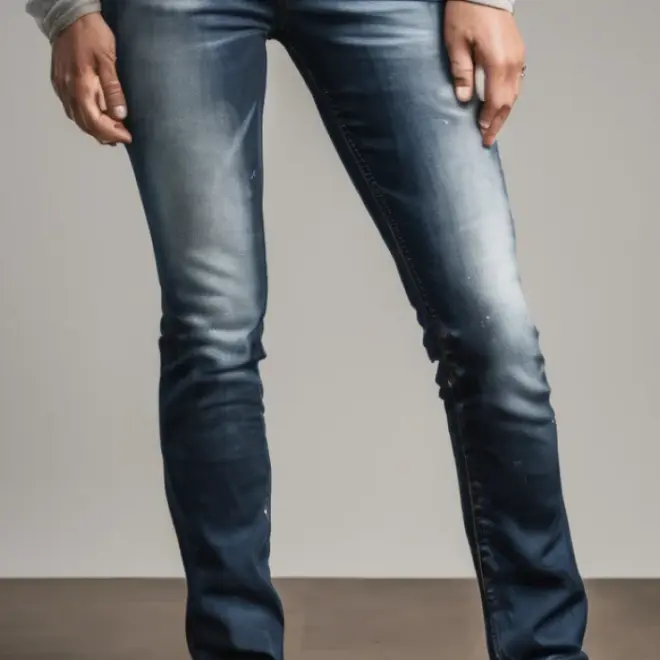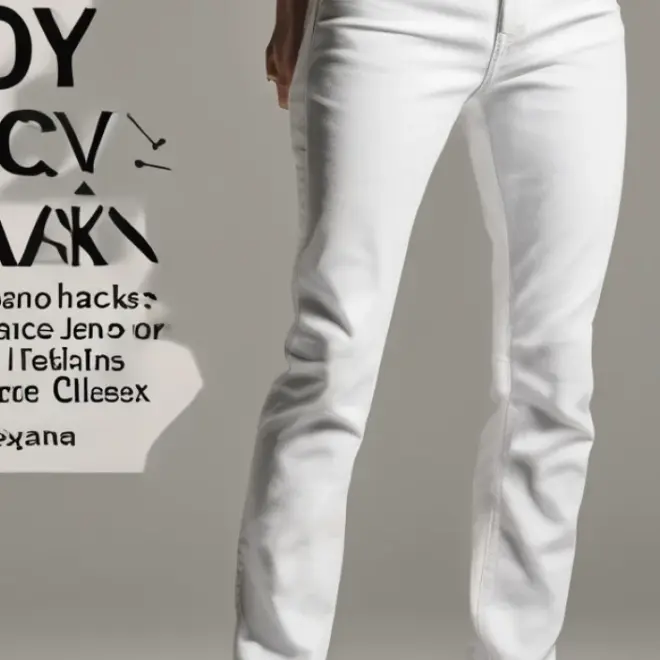Quick Summary
Removing paint from jeans is achievable with the right methods. For fresh paint, use soap and water or rubbing alcohol. For dried paint, try scraping gently, then applying a solvent like acetone or a specialized paint remover. Always test on an inconspicuous area first to protect your denim.
How to Remove Paint From Jeans: An Effortless Guide
Spills happen, and sometimes your favorite pair of jeans ends up with an unwanted splash of paint. Whether it’s a stray brushstroke during a DIY project or a mishap with art supplies, seeing paint mar your denim can be frustrating. But don’t worry! With a few simple techniques and common household items, you can often restore your jeans to their former glory. This guide will walk you through effective methods, from tackling fresh spills to banishing stubborn dried paint, ensuring you can confidently rescue your denim.
We’ll cover everything you need to know, including the best tools to use, when to call in the professionals, and how to protect your jeans throughout the process. Get ready to say goodbye to those paint splatters and hello to clean, wearable denim once again!
Understanding Paint Types and Denim

Before diving into removal, it’s helpful to understand the basics of paint and denim. Different types of paint (water-based, oil-based, spray paint) require different removal strategies. Denim, while durable, can also be sensitive to harsh chemicals, so a gentle approach is often best.
Water-Based Paints (Latex, Acrylic)
These are the most common for home projects like painting walls or crafting. They are water-soluble, making them easier to remove, especially when handled quickly.
Oil-Based Paints (Enamel, Alkyd)
These paints contain oil and require solvents for effective removal. They are more durable and can be harder to get out of fabric.
Spray Paints
Spray paints can be tricky due to their fine mist and propellant. Some are lacquer-based, while others are acrylic. Their removal often depends on the specific formulation.
Denim Care
Most jeans are made from cotton, often blended with a small percentage of elastane or polyester for stretch. While sturdy, the dye in denim can bleed, and excessive rubbing or harsh chemicals can damage the fabric fibers or fade the color unevenly. Always consider the color and wash of your jeans when choosing a removal method.
The Golden Rule: Act Fast!
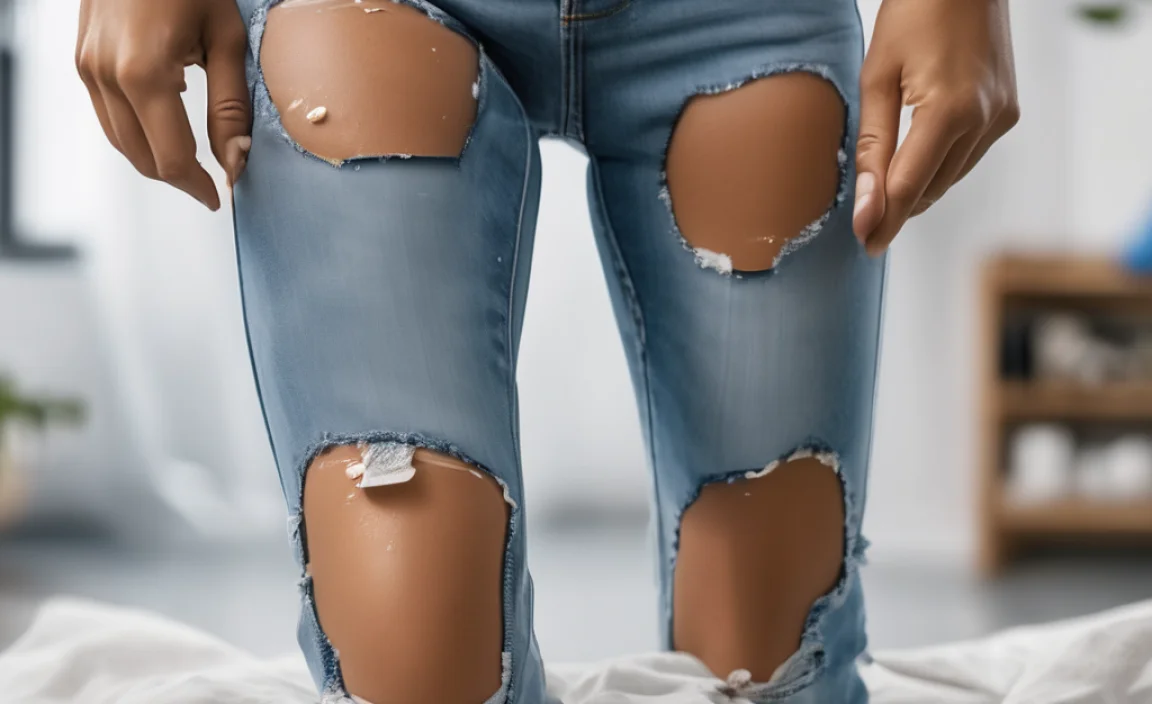
The single most important factor in successfully removing paint from jeans is speed. Fresh paint is significantly easier to lift than dried paint.
- Fresh Water-Based Paint: Blot immediately with a damp cloth.
- Fresh Oil-Based Paint: Blot immediately with dry cloths or paper towels to absorb as much excess as possible, then proceed with solvent-based removal.
If you discover paint after it has dried, don’t despair, but be prepared for a more involved process. The longer paint sits on the fabric, the deeper it penetrates the fibers, making it harder to extract.
Essential Tools and Supplies
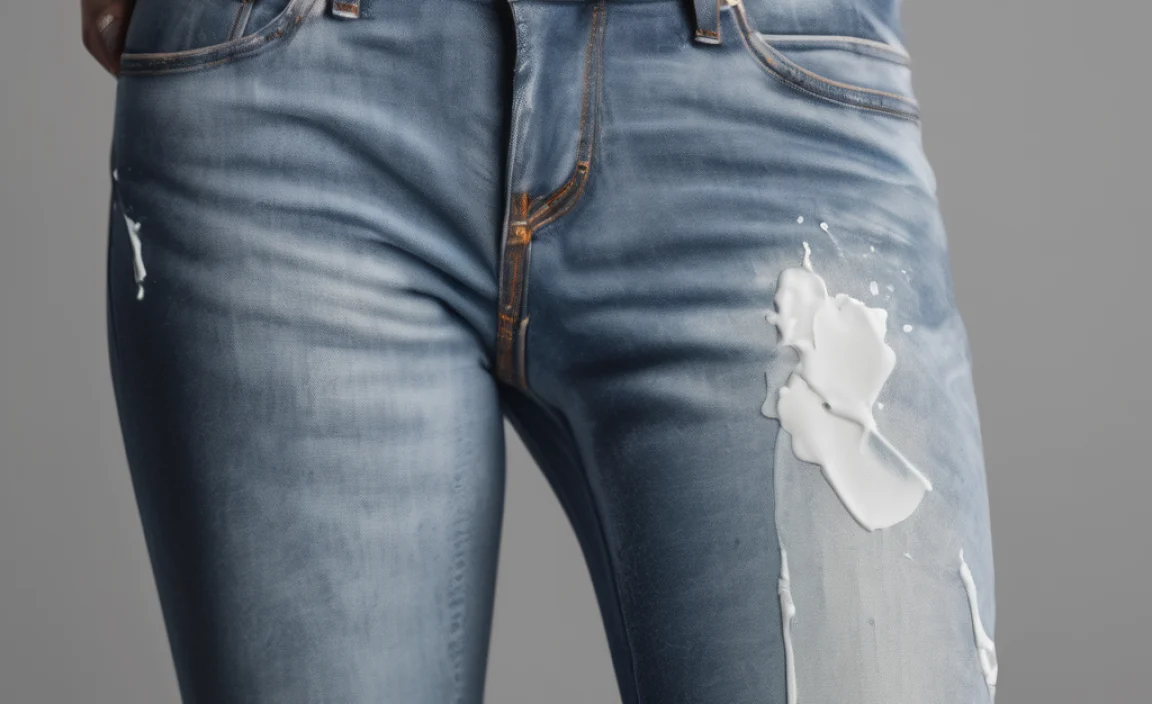
Having the right tools on hand will make the paint removal process smoother and more effective. Here’s a list of items you might need:
- Clean cloths or paper towels
- A soft-bristled brush (an old toothbrush works well)
- Scraping tool (e.g., dull knife, plastic spatula, credit card)
- Mild dish soap or laundry detergent
- Rubbing alcohol (Isopropyl alcohol)
- Acetone (nail polish remover)
- Glycerine (optional, for softening dried paint)
- Denatured alcohol (for tougher, dried paints)
- Specialized paint removers (test first!)
- Gloves (to protect your skin)
- A well-ventilated area
How to Remove Fresh Paint from Jeans
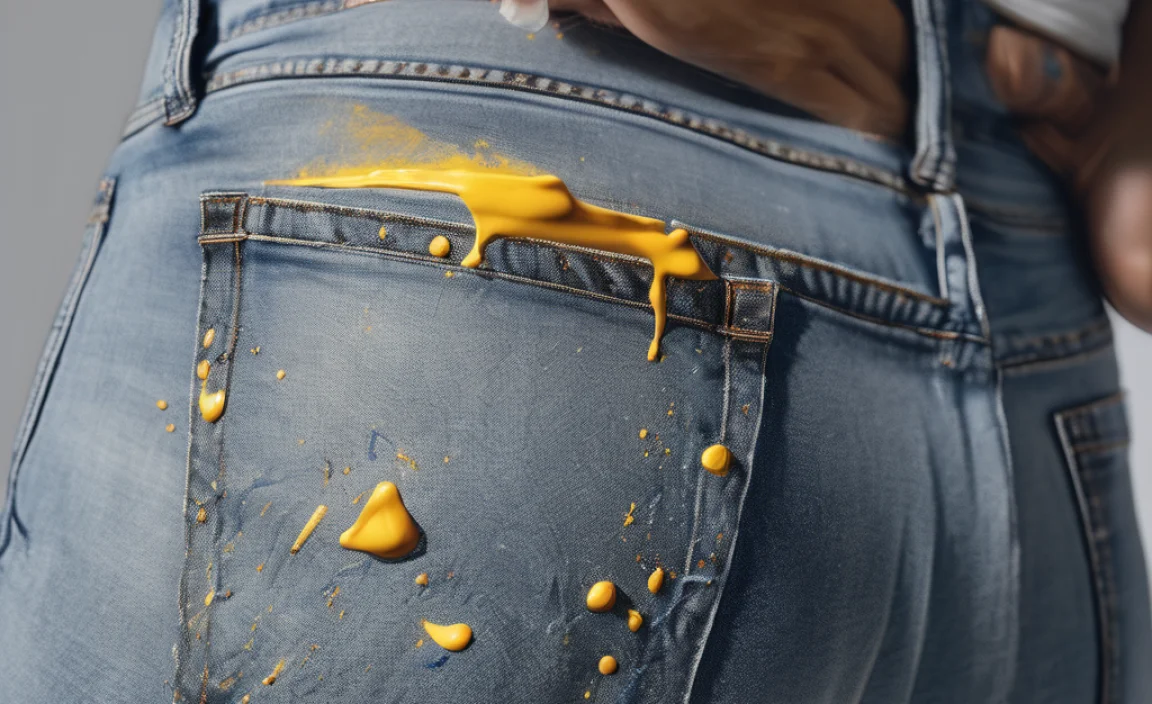
Dealing with wet paint is your best-case scenario. The approach varies slightly depending on the paint type.
Method 1: For Fresh Water-Based Paints (Latex, Acrylic)
This is the simplest scenario. Water-based paints are water-soluble and can often be washed away before they set.
- Blot Immediately: As soon as the spill occurs, grab a clean cloth or paper towel and gently blot the wet paint. Avoid rubbing, as this can spread the paint and push it deeper into the fabric.
- Rinse with Cold Water: Hold the affected area of the jeans under cold running water. Try to rinse from the back of the fabric to push the paint out, rather than further in.
- Apply Soap: If rinsing alone doesn’t remove it, apply a small amount of mild dish soap or liquid laundry detergent directly to the stain. Gently work it into the fabric with your fingers or a soft brush.
- Gently Scrub: Use a soft-bristled brush or your fingers to gently scrub the soapy area. Work in small circles, being careful not to damage the denim fibers.
- Rinse Again: Thoroughly rinse the area with cold water.
- Check the Stain: Examine the area. If the paint is gone, proceed to wash the jeans as usual. If remnants remain, repeat steps 3-5, or try rubbing alcohol (see Method 2).
- Wash as Usual: Once you’re satisfied that the paint is gone, wash and dry your jeans as you normally would.
Method 2: For Fresh Oil-Based Paints or Stubborn Water-Based Paints
When water and soap aren’t enough, or if you’re dealing with oil-based paint, you’ll need a bit more power.
- Blot Excess Paint: Use paper towels or cloths to absorb as much of the wet paint as possible.
- Test a Small Area: Before applying any solvent, test it on an inconspicuous spot of the jeans (like an inner seam or hem) to ensure it doesn’t damage the fabric or dye.
- Apply Rubbing Alcohol: Moisten a clean cloth or cotton ball with rubbing alcohol (isopropyl alcohol).
- Dab the Stain: Gently dab the paint stain with the alcohol-soaked cloth. You should see the paint starting to transfer to the cloth. Rotate to a clean section of the cloth as it picks up paint.
- Scrape Gently (if needed): For thicker paint, you might need to gently scrape away some of the excess with a dull knife or plastic scraper before dabbing.
- Work from the Outside In: When dabbing, start from the outer edges of the stain and work your way towards the center. This helps prevent spreading.
- Rinse: Once the paint appears to be lifted, rinse the area thoroughly with cold water.
- Apply Detergent: Apply a small amount of liquid laundry detergent and gently rub it into the area.
- Wash: Wash the jeans as usual in cold water.
- Air Dry: Air dry your jeans first to ensure all traces of the paint are gone before putting them in the dryer. Heat from the dryer can set any remaining stain.
How to Remove Dried Paint from Jeans

Dried paint is more challenging, as it has bonded with the fabric fibers. Patience and the right approach are key.
Method 3: Scraping and Gentle Solvents
This method focuses on breaking down the dried paint without damaging the denim.
- Let it Dry Completely (if not already): If the paint is partially dried and gummy, sometimes letting it dry completely can make it easier to manage.
- Scrape Off Excess: Use a dull knife, a plastic scraper, or even the edge of a credit card to carefully scrape away as much of the dried paint as possible. Be gentle to avoid snagging or tearing the denim.
- Soften the Paint (Optional): For very stubborn dried paint, you can try softening it first. Glycerine is a good option as it helps loosen the paint without being too harsh. Apply a small amount of glycerine to the paint spot and let it sit for 30 minutes to an hour. Then, try scraping again.
- Test Solvents: Always test any solvent you plan to use on an inconspicuous area of the jeans first.
- Apply Rubbing Alcohol: Moisten a clean cloth or cotton ball with rubbing alcohol.
- Dab and Blot: Dab the remaining paint stain with the alcohol. As the paint softens, blot it with a clean section of cloth. You may need to repeat this process multiple times, using fresh cloths and more alcohol as needed.
- Consider Acetone: If rubbing alcohol isn’t effective, you can try acetone (found in most nail polish removers). Apply it to a cloth and dab the stain. Acetone is stronger and can be effective on dry paint. Be extra cautious with darker washes, as acetone can sometimes affect the dye.
- Rinse Thoroughly: After dabbing with solvent, rinse the area extremely well with cold water.
- Apply Detergent and Scrub: Rub a liquid laundry detergent into the treated area and gently scrub with a soft brush.
- Wash and Air Dry: Wash the jeans in cold water and air dry them. Check for any remaining paint before tumble drying.
Method 4: Using Denatured Alcohol or Commercial Paint Removers
For very tough, dried paint, stronger solutions might be necessary.
Note: These methods involve stronger chemicals. Ensure good ventilation, wear gloves, and always test on a hidden area first.
- Protect Your Workspace: Lay down old towels or newspapers as paint removers can damage surfaces.
- Scrape Bulk Paint: As in Method 3, scrape off any loose, raised paint first.
- Test Denatured Alcohol: Denatured alcohol is a potent solvent that can break down dried paints. Apply a small amount to a hidden patch of the jeans. If it doesn’t cause significant discoloration or damage, proceed.
- Apply Denatured Alcohol: Moisten a clean cloth with denatured alcohol. Dab the paint stain repeatedly. You may need to let the alcohol sit for a few minutes to soften the paint.
- Blot and Scrape: As the paint softens, use a clean cloth to blot it away. You might need a dull scraper to help lift stubborn bits.
- Rinse, Detergent, Wash: Rinse the area thoroughly with cold water, apply liquid laundry detergent, gently rub, and then wash the jeans in cold water. Air dry.
- Consider Commercial Paint Removers: If the above methods fail, look for a fabric-specific paint remover. Products like Goof Off or Goo Gone are designed for sticky residues and paint-like substances, but always follow the product instructions precisely and test thoroughly on your jeans. Some of these can be quite strong. You can find detailed guidance on fabric stain removal from sources like the USDA which often covers principles applicable to various cleaning challenges.
- Intensive Washing: After using a commercial remover, you may need to wash the jeans multiple times to ensure all chemical residue is gone.
Special Considerations for Spray Paint
Spray paint can be particularly insidious, settling into the weave of the denim.
- Fresh Spray Paint: Work quickly. Blot as much as you can. Rubbing alcohol is often effective. For lacquer-based spray paints, acetone might be needed.
- Dried Spray Paint: This requires patience. Start with scraping. Then try denatured alcohol or a specialized spray paint remover. You might need to repeat the dabbing and blotting process over several sessions.
Protecting Your Jeans During Removal
It’s crucial to protect the integrity of your jeans throughout the process. Here are some tips:
- Always Test First: Before applying any chemical (even rubbing alcohol) to the main stain, test it on an inside seam or hem. This protects against unexpected discoloration or fabric damage.
- Work in a Ventilated Area: Solvents can have strong fumes. Ensure you have good airflow.
- Wear Gloves: Protect your hands from harsh chemicals.
- Be Gentle: Excessive scrubbing can weaken denim fibers, cause pilling, or lead to permanent fading.
- Avoid Heat: Never put paint-stained jeans in a hot dryer. Heat can permanently set the stain, making it impossible to remove. Always air dry and inspect carefully.
When to Seek Professional Help
If the paint stain is very large, has been there for a long time, or if your jeans are a much-loved, expensive, or delicate pair, you might consider a professional dry cleaner. They have access to specialized solvents and techniques that are difficult to replicate at home. However, always inform them about the type of stain and what you’ve already tried.
Table: Paint Type vs. Removal Method
This table provides a quick reference for choosing the best approach based on the type of paint.
| Paint Type | Fresh Stain Approach | Dried Stain Approach | Key Solvents/Tools |
|---|---|---|---|
| Water-Based (Latex, Acrylic) | Wipe/Rinse with cold water, then soap and water. | Scrape, then use rubbing alcohol or mild detergent. | Water, mild dish soap, laundry detergent, rubbing alcohol. |
| Oil-Based (Enamel, Alkyd) | Blot excess, then use rubbing alcohol or mineral spirits (test first). | Scrape, then denatured alcohol or specialized paint remover. | Rags, rubbing alcohol, mineral spirits (test), denatured alcohol, specialized removers. |
| Spray Paint (Lacquer-based) | Blot excess, then acetone or rubbing alcohol. | Scrape thoroughly, then acetone, denatured alcohol, or specialized spray paint remover. | Acetone, denatured alcohol, specialized spray paint removers. |
| Spray Paint (Acrylic-based) | Blot excess, then rubbing alcohol. | Scrape thoroughly, then rubbing alcohol, denatured alcohol, or specialized remover. | Rubbing alcohol, denatured alcohol, specialized removers. |
Frequently Asked Questions (FAQ)
Q1: Can I remove dried paint from my jeans without damaging the fabric?
Yes, but it requires patience and care. Always start with the gentlest methods (scraping, water, mild soap) and only move to stronger solvents after testing on an inconspicuous area. Avoid excessive scrubbing.
Q2: What’s the best way to remove fresh latex paint from jeans?
Act immediately! Blot the spill, then rinse the affected area with cold water. If the paint remains, apply a small amount of mild dish soap or liquid laundry detergent and gently work it in before rinsing thoroughly. Wash as usual.
Q3: My jeans are dark blue or black. Will paint removers stain or fade them?
There’s a risk. Stronger solvents like acetone or commercial paint removers can sometimes affect the dye in dark denim. Always perform a patch test on an inside seam first to see how the solvent reacts with the fabric’s color.
Q4: How long should I let a paint remover soak into the stain?
Follow the product instructions precisely. For home remedies like rubbing alcohol or acetone, you generally don’t need to let it soak for extended periods. Dabbing and blotting repeatedly is often more effective and less likely to damage the fabric than prolonged soaking.
Q5: What if I can’t get all the paint out?
If a faint stain remains after trying multiple methods, it might be permanent. Sometimes, washing the jeans a few more times can help fade any residual marks. If the paint is minimal and you can live with it, consider it a unique mark of an event or project!
Q6: Is it safe to use nail polish remover on my jeans?
Nail polish remover typically contains acetone, which can be effective on paint stains. However, it’s a strong solvent and can also lift or fade the dye from your jeans. Always test it on a hidden area first and use it sparingly, dabbing it onto the stain rather than soaking the entire area.
Conclusion
Paint accidents on your favorite jeans don’t have to be a style disaster. By understanding the type of paint involved and acting swiftly, you can often remove the offending marks with common household items. Remember the golden rule: the sooner you treat the stain, the better your chances of success. Always test solvents in an inconspicuous area, be gentle with the fabric, and avoid the heat of the dryer until you’re certain the paint is gone.
Whether it’s a fresh blot of water-based artist’s paint or a smudge of dried spray paint, the methods outlined in this guide offer a clear path to restoring your denim. With a little patience and the right technique, you can confidently tackle paint stains and keep your jeans looking great.</


